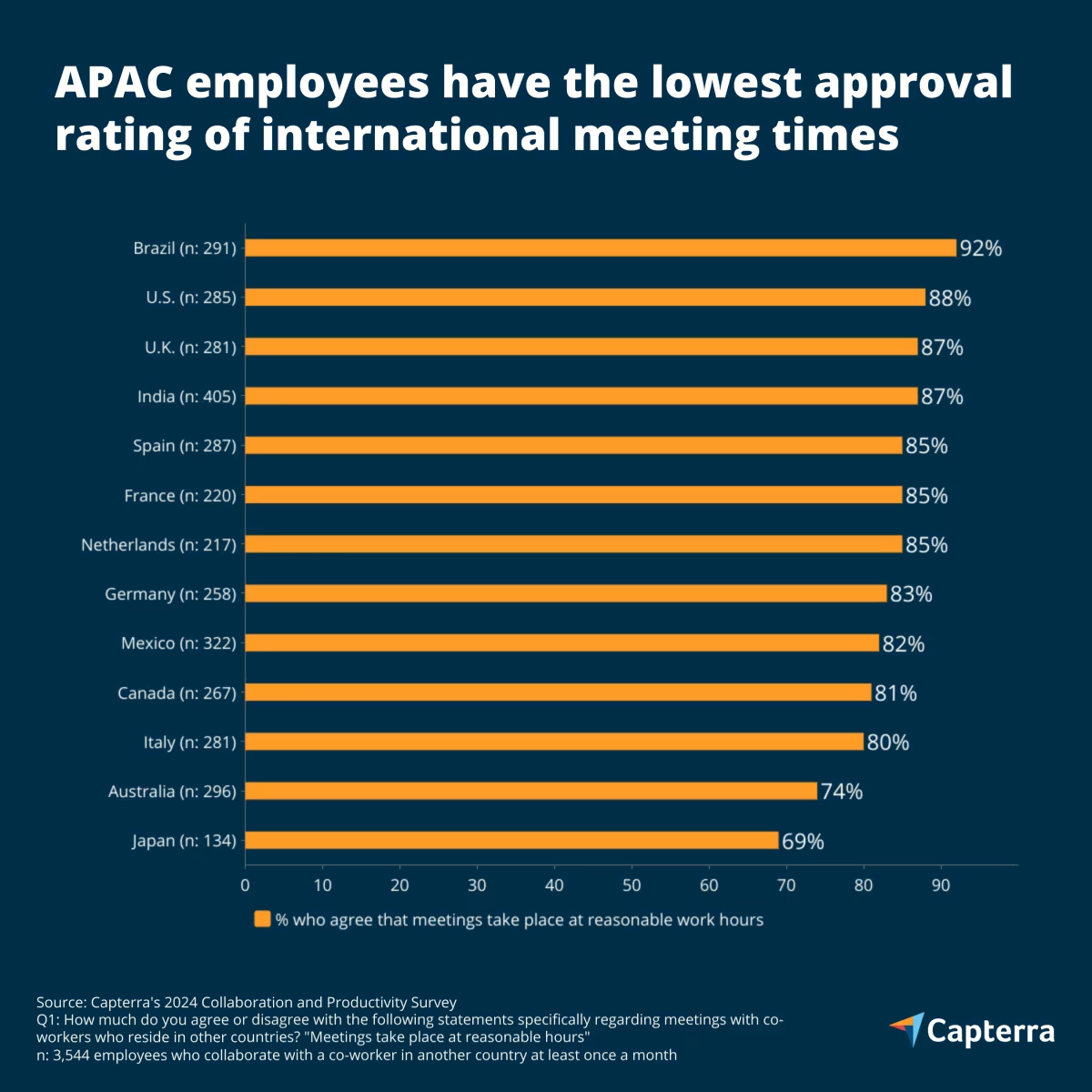Work hours, language barriers, culture challenges cited as issues when it comes to international collaboration: report

HR leaders across the world are faced with several challenges when it comes to maintaining seamless collaboration among a global workforce.
That's because 59% of global employees are new to collaborating with colleagues located in other countries. And this scenario raises issues, such as:
- Volatile work hours (44%)
- Language barriers (42%)
- Cultural misunderstandings (33%)
Brian Westfall, principal HR analyst at Capterra, said organisations need to understand that using virtual meeting software won't solve all problems related to international collaboration.
"HR leaders and project managers alike need to be cognizant of the differences in time, language, and culture that can impact how employees across country lines work together," he said in a statement.
Challenges in meeting hours
Challenges are emerging among various parts of the globe when it comes to international workplace collaboration, according to the report.
Employees in the United States said the largest time difference between them and a co-worker they regularly collaborate with is seven hours. But a majority of the respondents (88%) also noted that they find international meeting schedules reasonable, according to the report.

Employees from the other side of the world, however, tell a different story.
The report found that employees in Japan (69%) and Australia (74%) are least likely to say their meetings take place at reasonable work hours.
According to the report, these employees are often the ones "stuck taking meetings at odd hours to collaborate with co-workers in the Americas and Europe."
"If you have a sizable workforce in the APAC region, it may be beneficial to trade off when meetings take place and who has to work at odd hours," Capterra said on an insight.
Language barrier challenges
Another major issue cited when it comes to international collaboration is language barriers, given that 62% of the respondents said they work with colleagues who has a different native language.
The issue becomes more evident during international meetings - where more than half of employers are skipping crucial steps in helping non-native language speakers.

Cultural differences
The report also discovered that collaboration means different things from culture to culture. More than 80% of employees in Netherlands prefer in-person team bonding, while 52% want them to be virtual.
Despite major differences, many of the respondents (86%) feel like their country is adequately represented in the company culture at their job, but this drops to only 64% for Japanese employees.
According to the report, this may be a sign of lacklustre diversity, equity, and inclusion programmes, which employers can improve through employee resource groups.
Addressing workplace challenges
Overcoming these challenges will be critical, according to the report, which noted that international collaboration is rapidly growing given the popularity of remote work.
The report noted that technology can help in addressing these challenges after finding that 86% of employees believe software tools are making collaboration easier.
According to Capterra, it is also important that organisations are consistent with their virtual meetings, especially regarding time, and wholly understand when email or instant messaging should be used over meetings.







